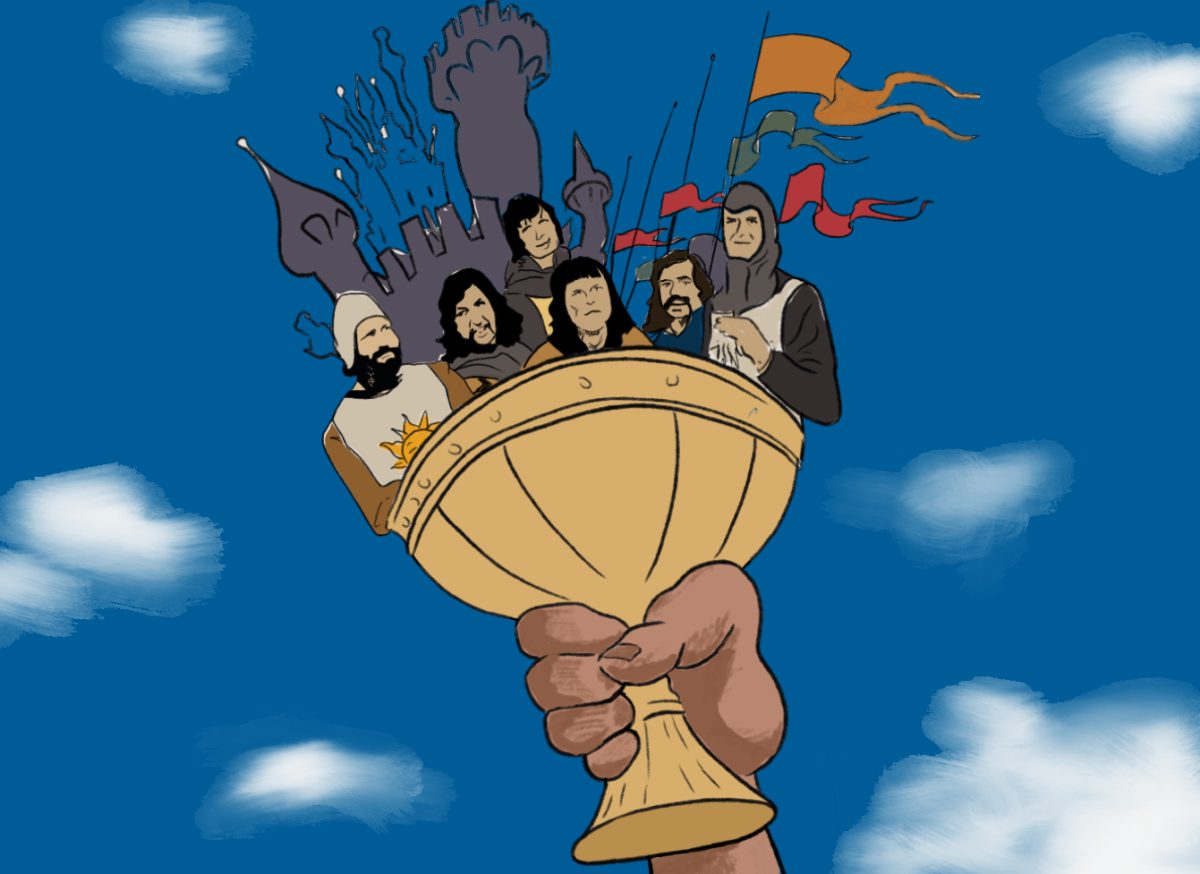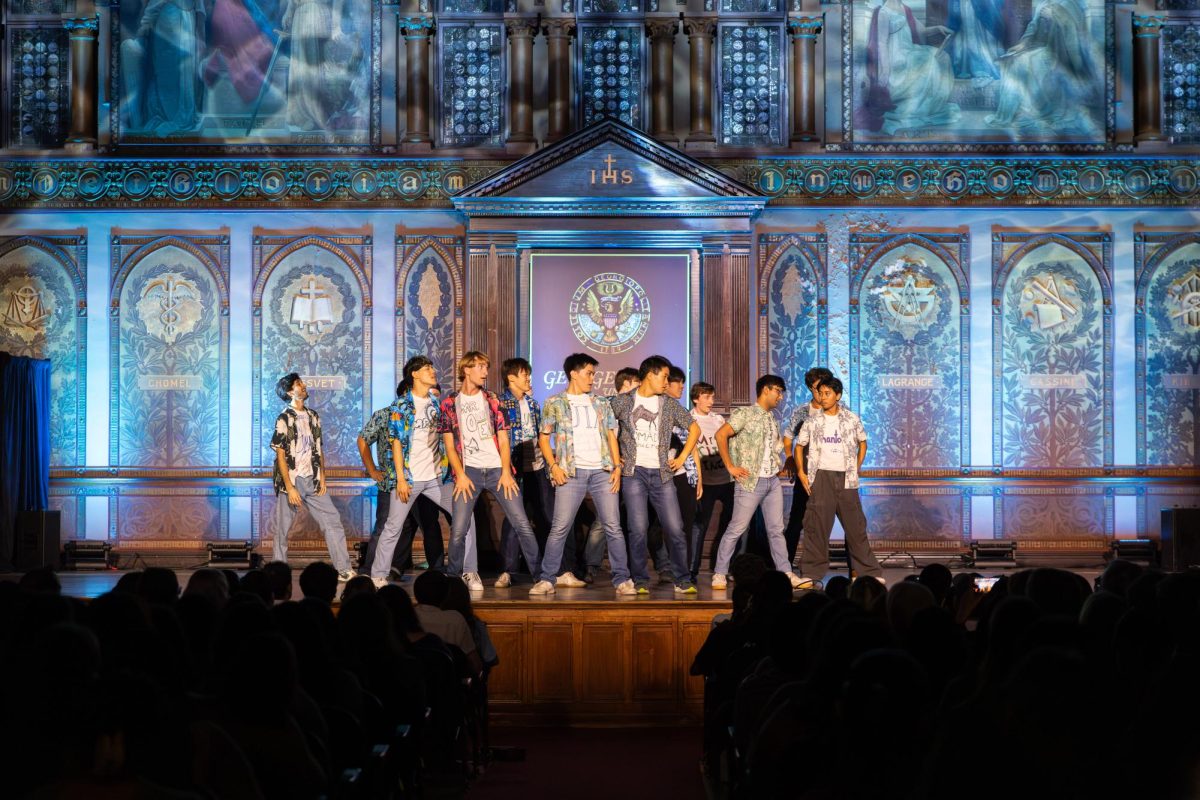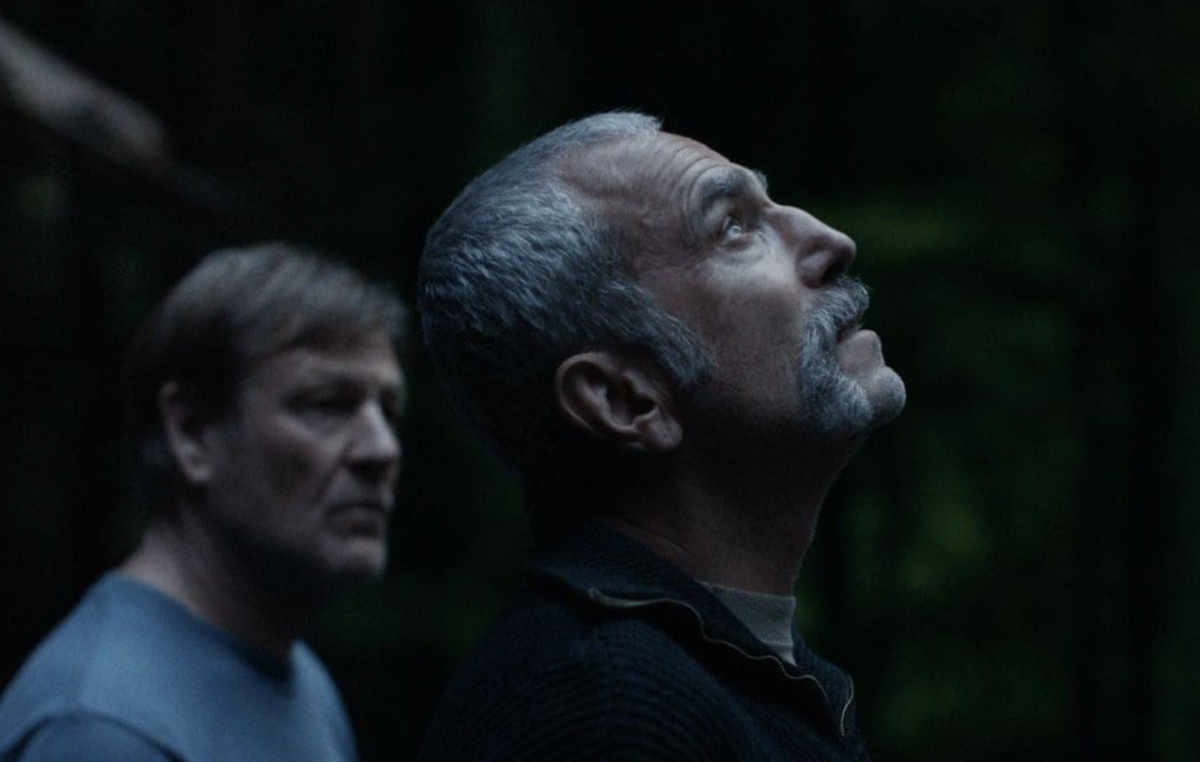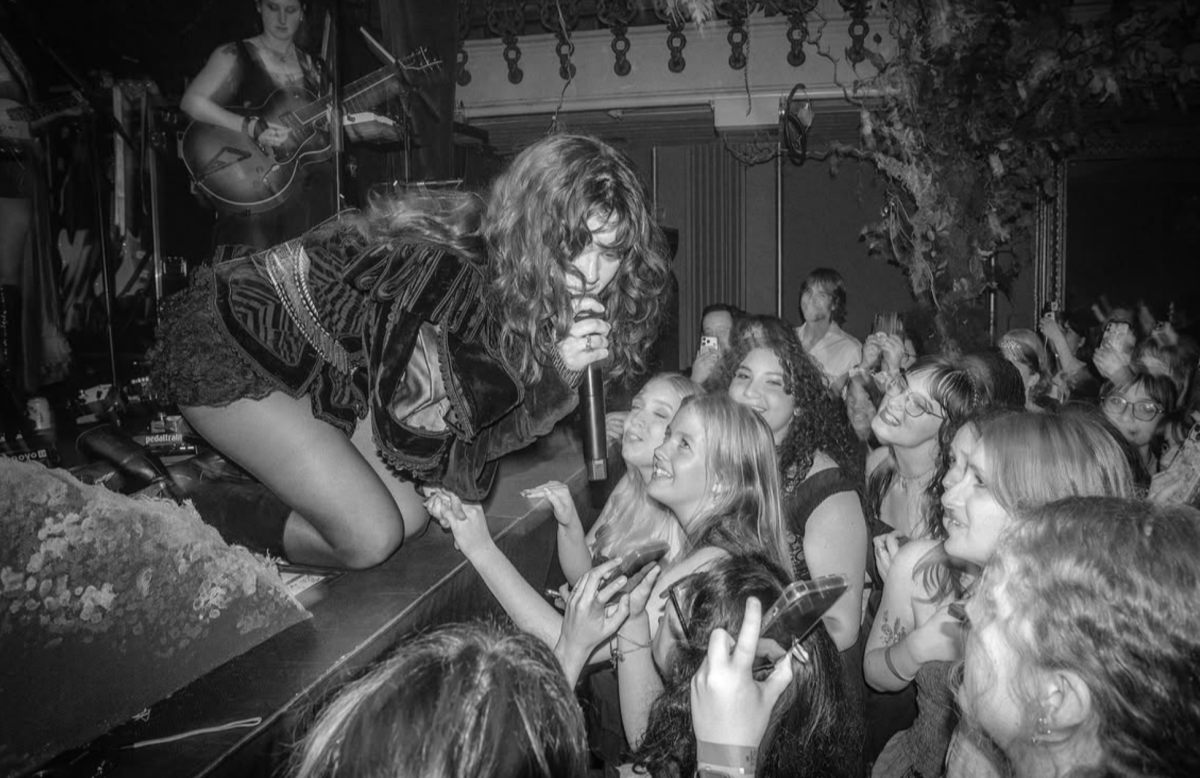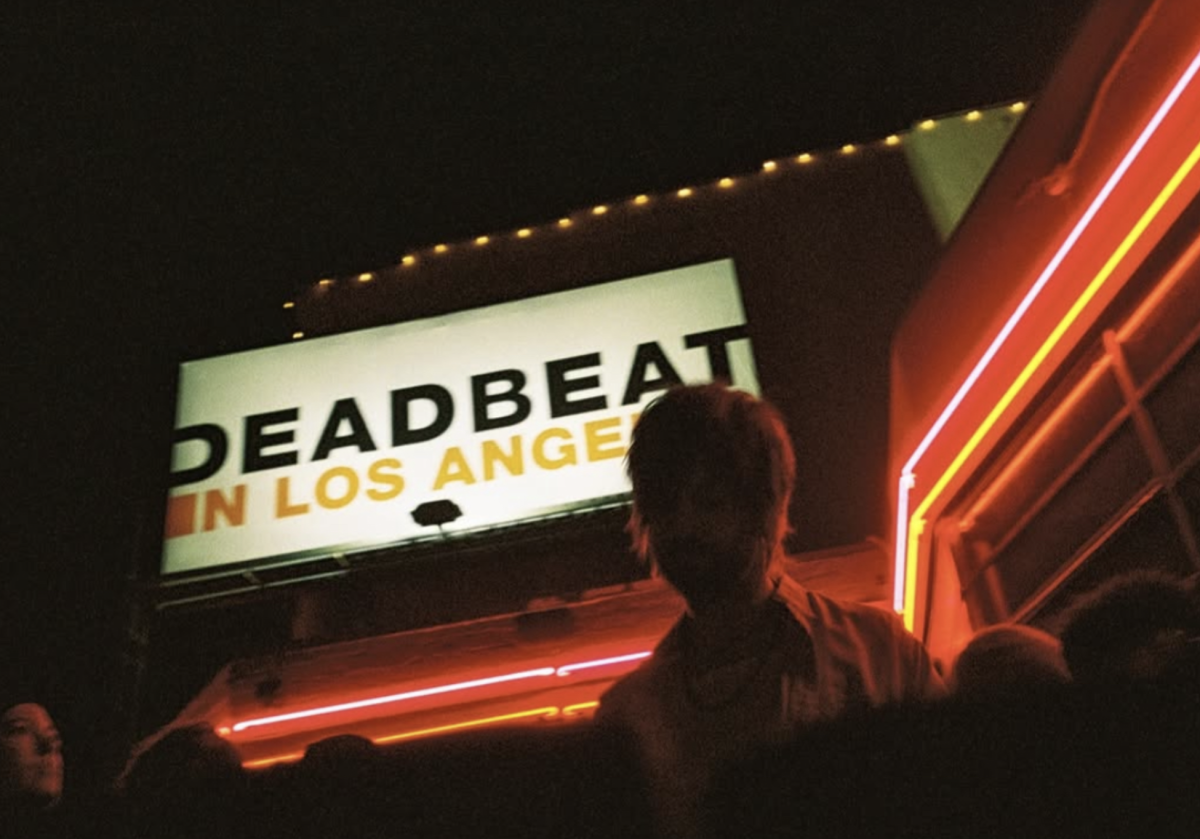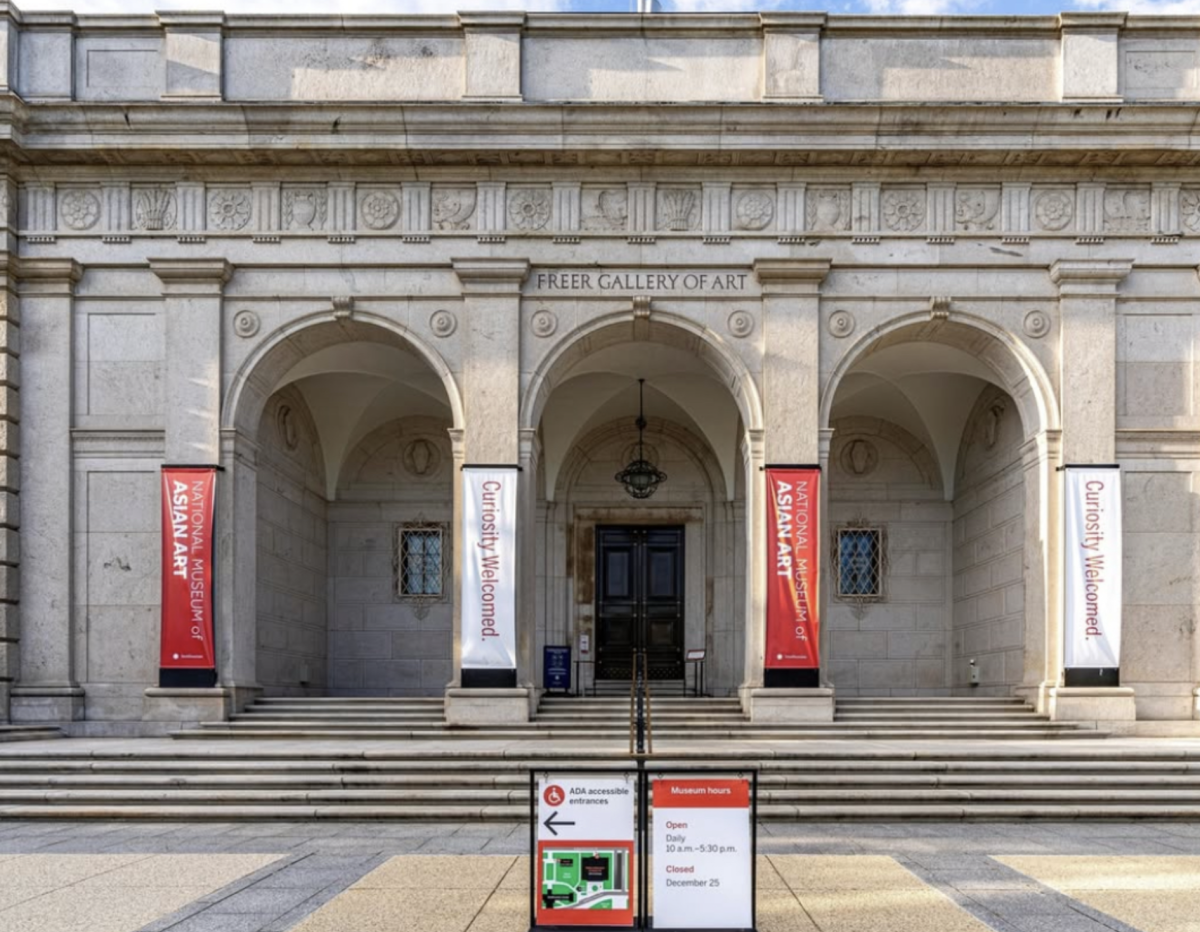
“Monty Python and the Holy Grail” is a blast from start to finish — even before Arthur, King of the Britons (Graham Chapman) embarks on his legendary quest to seek the Holy Grail. As early as the opening credits, an entire meta saga unfolds in the captions and on-screen graphics wherein the movie breaks the fourth wall and acknowledges its nature as fiction. The film repeatedly breaks the fourth wall, which only amps up the complete absurdity of its plot.
A parodic retelling of the Arthurian legend, “Monty Python and the Holy Grail” is narrated by Michael Palin, one of the six members of the British comedy troupe Monty Python. It follows King Arthur as he recruits his fabled Knights of the Round Table: Sir Bedivere the Wise (Terry Jones), Sir Lancelot the Brave (John Cleese), Sir Galahad the Pure (also played by Palin) and Sir Robin the Not-Quite-So-Brave-As-Sir-Lancelot (Eric Idle).
As King Arthur “trots” about on his coconut “horse,” he encounters scenes of sheer absurdity: among them, a revoltingly feculent English town where the dead are hauled out in carts (bring out your dead!) and an unusually intellectual peasant, Dennis (also played by Palin).
Dennis’s anarcho-syndicalism and critique of imperial dogma and exploitation are completely unfitting for the time (932 A.D.), but painfully hilarious and, despite the film celebrating its 50th anniversary this year, strikingly relevant. Such anachronism is central to the film; beyond the humor of mixing illogical “knowledge” befitting of the time with science that isn’t discovered for centuries to come, two timelines converge as a historian is brutally murdered by a knight on horseback. The film’s subversive and experimental nature is what anchors it as unparalleled in both its comedic and filmic value.
The knights’ nonsensical quest commences when the motley crew sees a vision of God commanding them to seek the Holy Grail. As they search for the Grail both individually and as a group, they face increasingly ridiculous obstacles. The knights venture to various castles, encountering a French guard who has mastered the art of nasty taunting and whose weapon of choice is — naturally — airborne livestock, a three-headed knight, a perilously tempting convent of young women and the infamous Knights of Ni, who demand that Arthur’s knights deliver them a shrubbery.
While every additional nonsensical plot point is hilarious and rife with quotable bits, my favorite scenes are the musical numbers. Sir Robin is constantly serenaded by his minstrels with a song lauding his cowardice when facing increasingly gruesome threats. However, the comedic value of that song only pales in comparison to the Camelot Song, which might just be the best part of the movie with its chaotic choreography, frantic cinematography and absurdly self-aware lines.
The film is also carried by its actors and their delivery of the absurd script — even when bits drag on too long, the actors’ sheer amusement prevails with moments where their battle to hold back laughter is visible, such as the early witch scene. Some of the animated elements drag on as well, but the medieval art style is captivating, and, of course, the ridiculous action continues even in the animation.
The film’s sets and costuming are also commendable. Despite the absurdity of the story itself, the ambiance truly feels medieval, and even Camelot, which the knights acknowledge to be a model in another fourth-wall break, looks accurate.
Overall, the film is an impressive feat — the humor is endless, not only in its abundantly hilarious script, but also through its ridiculous converging plotlines, intermittent animated sequences and fantastic musical numbers. Of course, it’s best watched with a crowd (or parent) to deliver every line in unison with the cast, but even alone, you’re guaranteed to get a kick out of it. It solidly earns a five (not three, sir) star rating.


